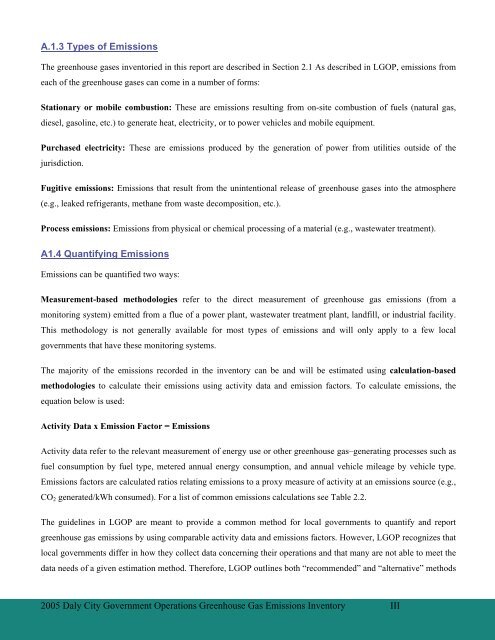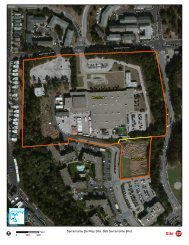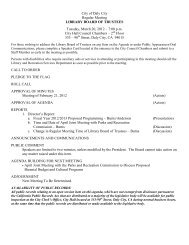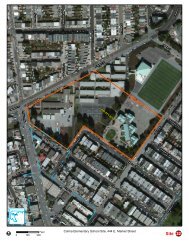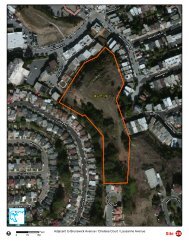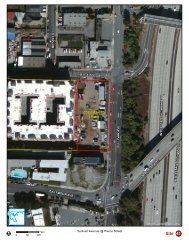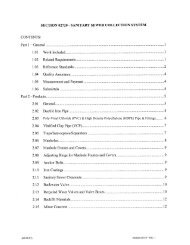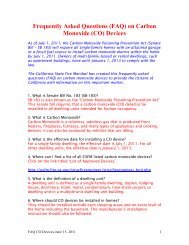Daly City's Green Vision - City of Daly City
Daly City's Green Vision - City of Daly City
Daly City's Green Vision - City of Daly City
You also want an ePaper? Increase the reach of your titles
YUMPU automatically turns print PDFs into web optimized ePapers that Google loves.
A.1.3 Types <strong>of</strong> Emissions<br />
The greenhouse gases inventoried in this report are described in Section 2.1 As described in LGOP, emissions from<br />
each <strong>of</strong> the greenhouse gases can come in a number <strong>of</strong> forms:<br />
Stationary or mobile combustion: These are emissions resulting from on-site combustion <strong>of</strong> fuels (natural gas,<br />
diesel, gasoline, etc.) to generate heat, electricity, or to power vehicles and mobile equipment.<br />
Purchased electricity: These are emissions produced by the generation <strong>of</strong> power from utilities outside <strong>of</strong> the<br />
jurisdiction.<br />
Fugitive emissions: Emissions that result from the unintentional release <strong>of</strong> greenhouse gases into the atmosphere<br />
(e.g., leaked refrigerants, methane from waste decomposition, etc.).<br />
Process emissions: Emissions from physical or chemical processing <strong>of</strong> a material (e.g., wastewater treatment).<br />
A1.4 Quantifying Emissions<br />
Emissions can be quantified two ways:<br />
Measurement-based methodologies refer to the direct measurement <strong>of</strong> greenhouse gas emissions (from a<br />
monitoring system) emitted from a flue <strong>of</strong> a power plant, wastewater treatment plant, landfill, or industrial facility.<br />
This methodology is not generally available for most types <strong>of</strong> emissions and will only apply to a few local<br />
governments that have these monitoring systems.<br />
The majority <strong>of</strong> the emissions recorded in the inventory can be and will be estimated using calculation-based<br />
methodologies to calculate their emissions using activity data and emission factors. To calculate emissions, the<br />
equation below is used:<br />
Activity Data x Emission Factor = Emissions<br />
Activity data refer to the relevant measurement <strong>of</strong> energy use or other greenhouse gas–generating processes such as<br />
fuel consumption by fuel type, metered annual energy consumption, and annual vehicle mileage by vehicle type.<br />
Emissions factors are calculated ratios relating emissions to a proxy measure <strong>of</strong> activity at an emissions source (e.g.,<br />
CO 2 generated/kWh consumed). For a list <strong>of</strong> common emissions calculations see Table 2.2.<br />
The guidelines in LGOP are meant to provide a common method for local governments to quantify and report<br />
greenhouse gas emissions by using comparable activity data and emissions factors. However, LGOP recognizes that<br />
local governments differ in how they collect data concerning their operations and that many are not able to meet the<br />
data needs <strong>of</strong> a given estimation method. Therefore, LGOP outlines both “recommended” and “alternative” methods<br />
2005 <strong>Daly</strong> <strong>City</strong> Government Operations <strong>Green</strong>house Gas Emissions Inventory III


